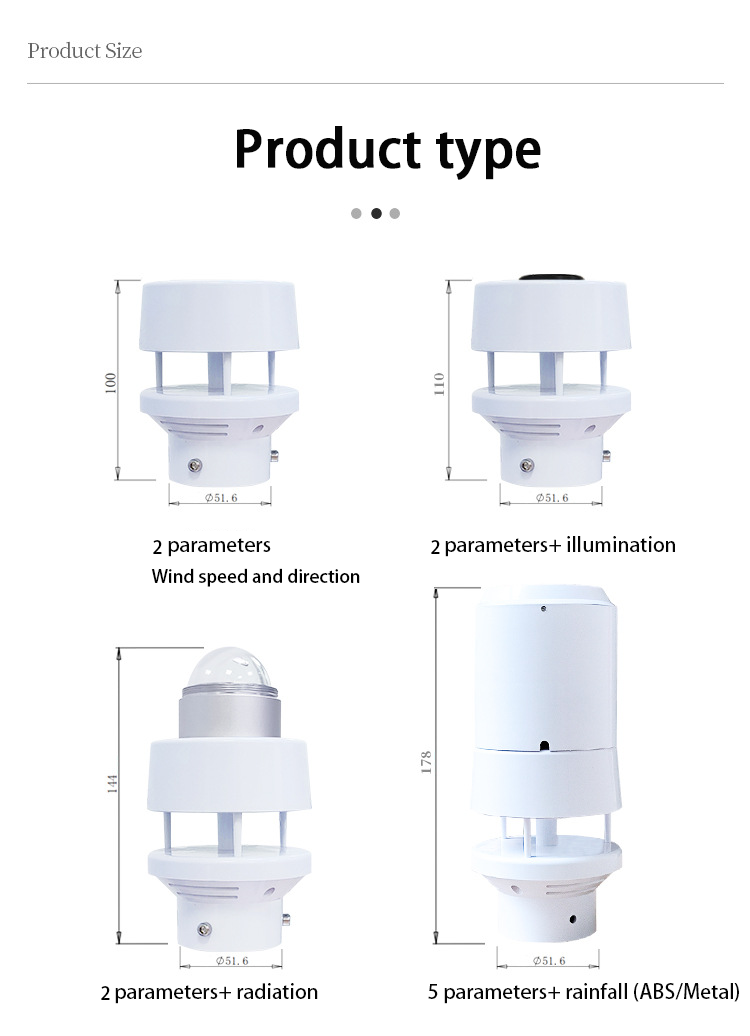The North American wireless weather station market is segmented into several key segments based on application. Home use remains an important part as personal weather monitoring becomes increasingly popular among homeowners for garden care, outdoor activities and general climate awareness. Agriculture is another important application area where wireless weather stations are critical for monitoring microclimate conditions on farms, optimizing irrigation schedules and improving crop yield forecasts. In the field of meteorology, these stations play a key role in collecting real-time weather data for weather forecasting agencies and climate scientists, helping in more accurate weather forecasts and severe weather monitoring. Research organizations use wireless weather stations to collect accurate environmental data for scientific research and climate change studies to better understand local and regional weather patterns. Other applications include industrial use, educational institutions and recreation, where wireless weather stations are used to meet a variety of specialized monitoring needs.
The North American wireless weather station market is characterized by a wide range of applications, each addressing the unique needs of different industries. As technological advances continue to improve the accuracy, reliability and availability of these devices, their adoption in homes, farms, research centers and weather agencies is expected to increase. Key factors driving the market growth include growing awareness of climate change, rising demand for real-time weather data for precision agriculture, and growing trend of smart home automation with built-in weather monitoring capabilities. Additionally, innovations such as wireless connectivity, cloud storage, and smartphone integration are increasing the accessibility and usability of wireless weather stations in a variety of applications. This segment is expected to expand as stakeholders across industries recognize the value of accurate weather information for decision-making processes and improved operational efficiency.
Looking to the future, the outlook for the North American wireless weather station market appears bright but challenging. Expected advances in technology and market factors will change the market landscape and open up new opportunities for growth and innovation. Strategic forecasting and proactive adaptation to emerging trends are critical for stakeholders looking to leverage the subject in the evolving dynamics of the Wireless Weather Stations market.
The North American wireless weather station market shows promising regional differences in consumer preferences and market dynamics. In North America, the market is experiencing high demand for innovative North American wireless weather stations driven by technological advancements. The Latin American market is booming, and consumer awareness of the benefits of wireless weather stations in North America continues to grow. Overall, the regional analysis highlights the diverse opportunities for market expansion and product innovation in the North America wireless weather station market.
A wireless weather station is a device that measures and transmits weather data without the need for physical cables.
Increasing demand for real-time weather updates, advancements in weather monitoring technology and growing adoption of Internet of Things are fueling the growth of the wireless weather station market.
There are many types of wireless weather stations, including home weather stations, professional weather stations, and portable weather stations.
Some of the major challenges include high upfront costs, limited awareness of the benefits of wireless weather stations, and competition from traditional weather monitoring methods.
Some key trends include the integration of artificial intelligence and machine learning into weather monitoring, the emergence of compact portable weather stations, and the development of solar-powered wireless weather stations.
Growth opportunities include increased use of wireless weather stations in agriculture, construction and aviation, as well as growing demand for weather monitoring in smart home systems.
Market dynamics vary from region to region, with factors such as climate change, government regulation, and technological advancement influencing the growth of the wireless weather station market in different regions.
Key features to consider include sensor accuracy, transmission range, data display options, and compatibility with other devices or software.
The market is segmented into residential, commercial and industrial applications of wireless weather stations.
The market value is expected to reach US$500 million by 2025, growing at a CAGR of 7% during the forecast period.
The most commonly used sensors include temperature sensors, humidity sensors, wind speed and direction sensors, and precipitation sensors.
Factors include demand for precision agriculture, the impact of weather on crop yields, and government support for advanced agricultural technologies.
Wireless weather stations play a vital role in renewable energy production by providing real-time weather data to optimize energy production and power plant operations.
Regulatory issues may include data privacy rules, wireless spectrum allocation, and compliance with weather monitoring standards.
Benefits include real-time weather updates for home automation, personalized climate control, and improved energy efficiency through smart decision making based on weather data.
The increasing frequency of extreme weather events is driving the demand for advanced weather monitoring solutions, leading to the growth of the wireless weather station market.
Wireless weather stations provide critical weather information for outdoor activities, sporting events and adventure travel, helping with safety and planning.
Key differences include the use of physical cables with traditional methods, limited data transmission range, and the need for manual data collection and analysis compared to the real-time capabilities of wireless weather stations.
With accurate and timely weather data for a variety of applications including agriculture, construction and logistics, businesses can benefit from improved decision making, risk management and operational efficiency.
Post time: Aug-30-2024


